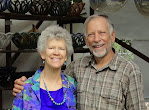In 2020, while we were “stuck” on Taquile during the p*ndemic, I got ahold of both white and red clay and made a few little pots. Fuel is not abundant, so they were never fired—that is, until now.
THE PROCESS
Of course, one of the first uses was clay-play with the kids:
Next, I made a fairly ambitious planter with rich texture. I used a technique with corn cobs to raise the walls, which I had learned years ago from Guatemalan potters in Totonicapán.
The clay had some small rocks and plant material and took some cleaning.
Some of the process:
I also found some white clay and decided to make simple little boxes for serving a selection of tea bags, pleasant for both for the family and for tourist guests at our homestay dining room. This photo shows it in the raw, unfired state, the texture inspired by Incan rock work:
And the same piece fired:
FIRING
SUMMARY
First, I regret that I forgot to take pictures of the unfired pieces before they went into the combustibles.
The fuel was extremely heavy, mainly because of the soil that was mixed with it. In a future attempt I will pull the pottery to the top of the pile right at the end before putting on the hot flash of the eucalyptus leaves. I think that hot fire could have burned away some of the carbon and given some color variability to the white or red clay.
The clay IS fired. Besides sitting in the rain overnight and remaining intact, I put them on top of the propane burner until a spot turned red with the heat. I was trying to burn off some of the carbon to be able to see the clay color. I got only a very small revelation of that uncarbonated clay. This clay and firing method could certainly be made into cook pots that would work just fine on directly on open flames. I may yet slip them into a wood-burning cook fire and see we can burn away some of the carbon. If I do, I will amend this post and show the final product.
GRATITUDE
Finally, I’m blown away that this indigenous household was able to safely store raw clay pottery for 3 1/2 years until I was able to come back and fire it. I’m grateful for their kindness and support and for the love that we share.






















































